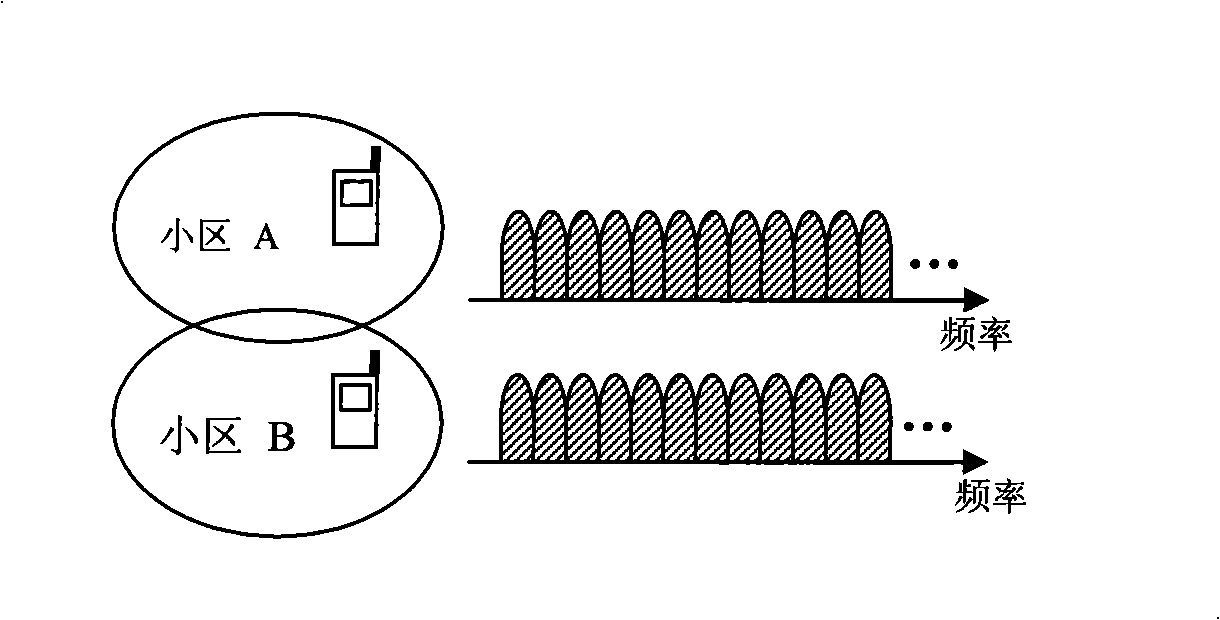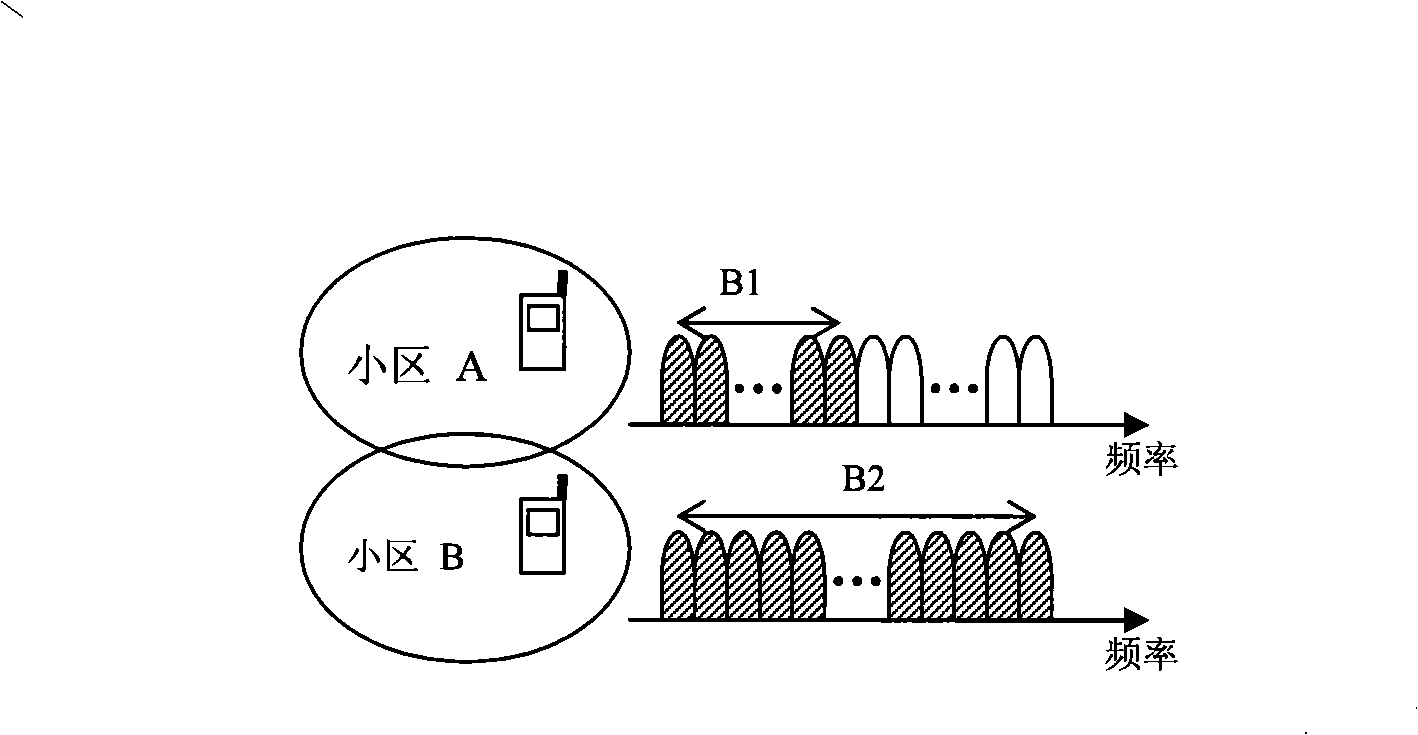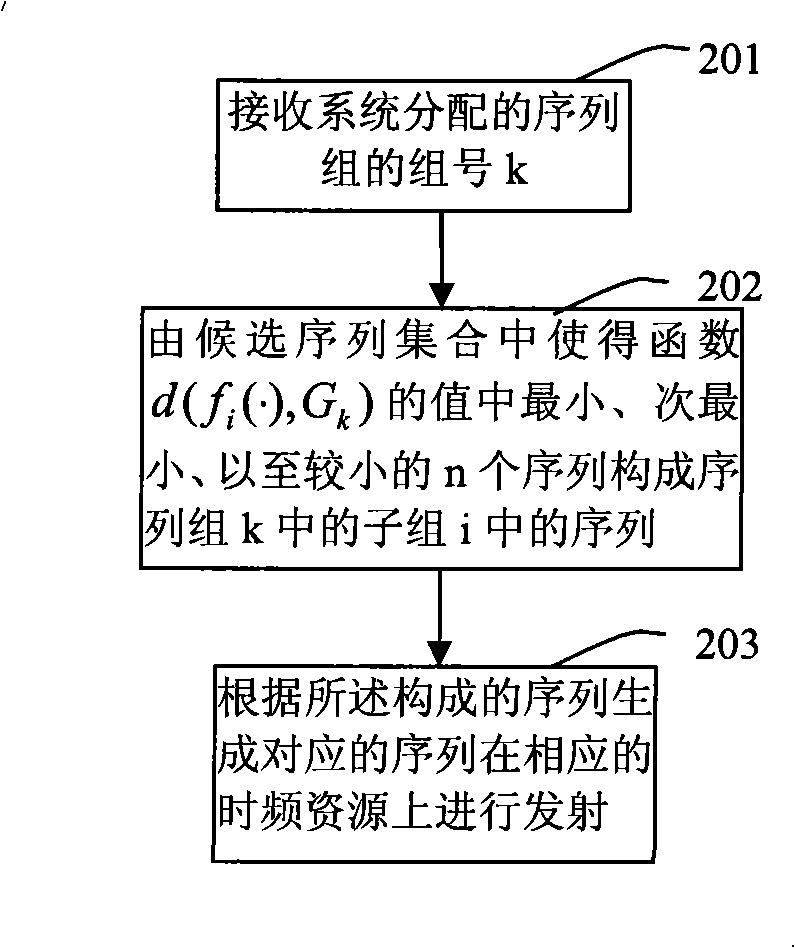Sequence allocation and processing method and device for communication system
A sequence allocation and communication system technology, applied in the field of communication, can solve the problems of complicated cell interference, etc., and achieve the effect of reducing complexity and less interference
- Summary
- Abstract
- Description
- Claims
- Application Information
AI Technical Summary
Problems solved by technology
Method used
Image
Examples
specific Embodiment approach 1
[0067] In a specific embodiment of the present invention, the system assigns sequence groups to cells / users / channels, wherein the sequences in each sequence group are divided into multiple sequence subgroups; each sequence subgroup corresponds to a way of occupying time-frequency resources, The time-frequency resource occupation mode in the communication system is in one-to-one correspondence with the sequence subgroups; the sequences in each subgroup are selected and generated from the candidate sequence set corresponding to the subgroup according to certain rules. According to the allocated sequence group and the specific time-frequency resource occupation mode of the transmitted signal, the user or channel selects the sequence in the sequence subgroup corresponding to the time-frequency resource occupation mode of the transmitted signal in the allocated sequence group for transmission. or receive.
[0068] The specific rules above are: for any subgroup i, determine the func...
example 1
[0143] There are 4 subgroups in this embodiment, and the sequence candidate sets are N respectively. 1 =11,N 2 =23,N 3 =37,N 4 =47 Zadoff-Chu sequence, take the fourth sequence group as an example, when k=4, step 1101, obtain v 4,i and u 5,i i∈{1, 2, 3, 4}, specifically:
[0144] For subgroup 1, v 4,1 = 1 / (2×11), u 5,1 =-1 / (2×11).
[0145] Pair group 2, right 4,1 =v 4,1 +4 / 11=1 / (2×11)+4 / 11, left 5,1 = u 5,1 +5 / 11=-1 / (2×11)+5 / 11; there is no r that satisfies the condition 5,1 and r 4,1 , so v 4,2 =v 4,1 , ie v 4,2 =1 / (2×11); u 5,2 = u 5,1 , namely u 5,2 =-1 / (2×11).
[0146] Pair group 3, right 4,2 =v 4,2 +4 / 11=1 / (2×11)+4 / 11, left 5,2 = u 5,2 +5 / 11=-1 / (2×11)+5 / 11;
[0147] to N 2 = 23, change r 2 , get when r 5,2 = 10 o'clock r 5,2 / N 2 -left 5,2 >0 and |r 5,2 / N 2 -left 5,2 | Takes the minimum value due to r 5,2 / N 2 -1 / 2(N 2 )-right 4,2 >0, so v 4,3 =v 4,2 , ie v 4,3 =1 / (2×11);
[0148] to N 2 = 23, change r 2 , get when r 4,2 = 9 o'...
example 2
[0170] When the number of subgroups in the sequence group is more, it will be found that u and v are calculated. After a certain subgroup is calculated, u and v of other longer sequence subgroups will not change. Specifically, for a system bandwidth of 5M, N 1 =11,N 2 =23,N 3 =37,N 4 =47,N 5 =59,N 6 =71,N 7 =97,N 8 =107,N 9 =113,N 10 =139,N 11 =179,N 12 =191,N 13 =211,N 14 =239,N 15 =283,N 16 =293. Take the fourth sequence group as an example, namely k=4, v 4,i and u 5,i i ∈ {1, 2, 3, ..., 16} is obtained as follows:
[0171] For subgroup 1, v 4,1 = 1 / (2×11), u 5,1 =-1 / (2×11).
[0172] Pair group 2, right 4,1 =v 4,1 +4 / 11=1 / (2×11)+4 / 11, left 5,1 = u 5,1 +5 / 11=-1 / (2×11)+5 / 11; there is no r that satisfies the condition 5,1 and r 4,1 , so v 4,2 =v 4,1 , ie v 4,2 =1 / (2×11); u 5,2 = u 5,1 , namely u 5,2 =-1 / (2×11).
[0173] Pair group 3, right 4,2 =v 4,2 +4 / 11=1 / (2×11)+4 / 11, left 5,2 = u 5,2 +5 / 11=-1 / (2×11)+5 / 11;
[0174] to N 2 = 23, change r...
PUM
 Login to View More
Login to View More Abstract
Description
Claims
Application Information
 Login to View More
Login to View More - R&D
- Intellectual Property
- Life Sciences
- Materials
- Tech Scout
- Unparalleled Data Quality
- Higher Quality Content
- 60% Fewer Hallucinations
Browse by: Latest US Patents, China's latest patents, Technical Efficacy Thesaurus, Application Domain, Technology Topic, Popular Technical Reports.
© 2025 PatSnap. All rights reserved.Legal|Privacy policy|Modern Slavery Act Transparency Statement|Sitemap|About US| Contact US: help@patsnap.com



